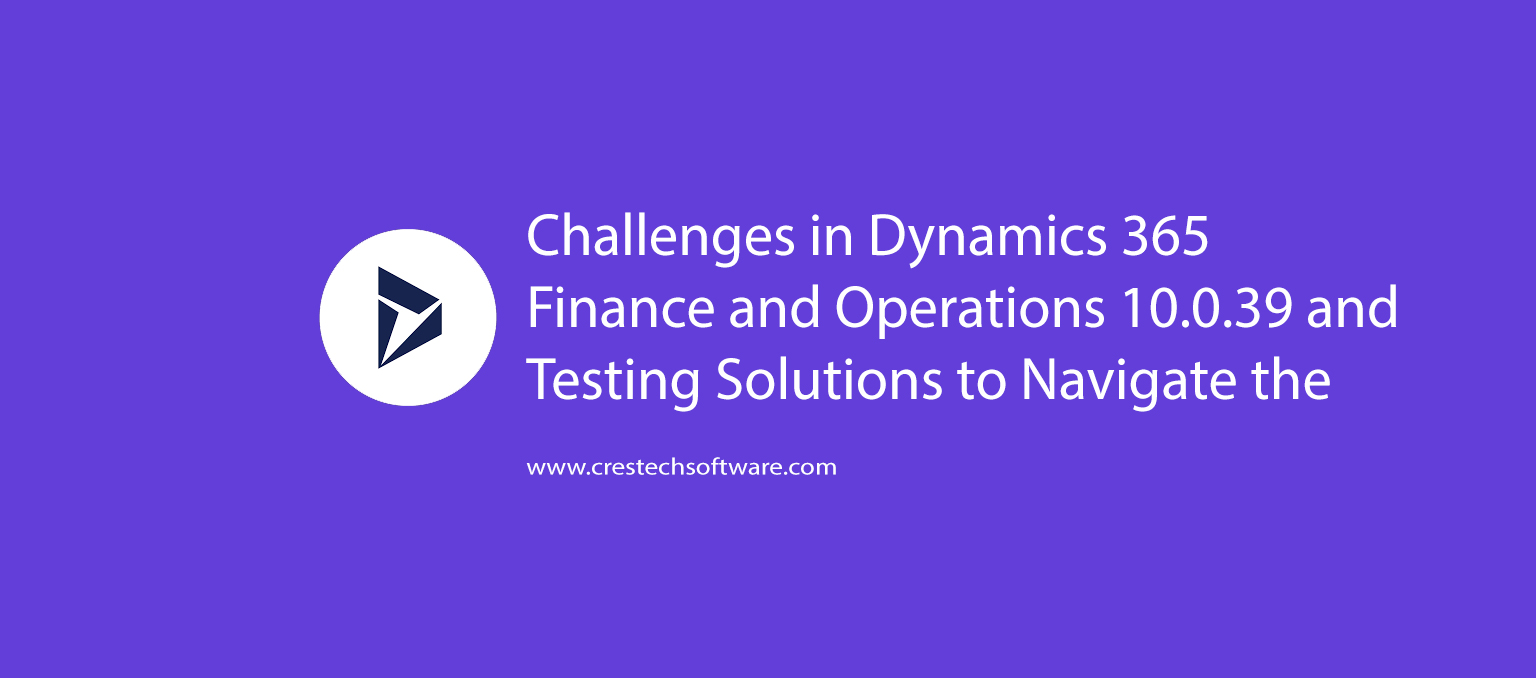Regular upgrades are critical for keeping software relevant and flexible to changing needs. Microsoft, a prominent power in this industry, understands this notion and continually pushes the envelope, enriching its products with each new edition.
Dynamics 365 Finance 10.0.39 is a robust enterprise resource planning (ERP) solution designed to streamline financial operations and empower businesses with real-time insights. While the platform offers a plethora of features, organizations often face challenges during implementation and ongoing usage.
In this blog, we’ll delve into the specific challenges associated with the Dynamics 365 Finance 10.0.39 update and explore how a strategic MSD testing approach can effectively address these issues.
Challenges in Dynamics 365 Finance 10.0.39
1. Complex Configurations and Customizations:
Dynamics 365 Finance allows extensive configurations and customizations to meet unique business requirements. However, this flexibility can lead to complexity during implementation. Organizations often struggle with intricate configurations that may impact the system’s stability and performance.
2. Integration Issues:
Many enterprises rely on a multitude of systems for various business functions. Integrating Dynamics 365 Finance 10.0.39 with existing applications and third-party solutions can be challenging. Data inconsistencies, compatibility issues, and communication gaps can arise, hindering the seamless flow of information across the organization.
3. Data Migration Concerns:
Transitioning from legacy systems to Dynamics 365 Finance requires meticulous data migration. Inaccurate or incomplete data migration can lead to discrepancies, impacting financial reporting and decision-making processes.
4. User Adoption and Training:
The success of any ERP system relies heavily on user adoption. Inadequate training and resistance to change among employees can impede the effective utilization of Dynamics 365 Finance features, resulting in underutilized functionalities and decreased ROI.
5. Regulatory Compliance:
Financial operations are subject to stringent regulatory requirements. Adapting Dynamics 365 Finance to comply with changing regulations and standards poses a continual challenge for organizations, requiring constant updates and modifications.
6. Performance and Scalability:
As business operations expand, the ERP system must scale to accommodate increased data volumes and user loads. Ensuring optimal performance and scalability of Dynamics 365 Finance 10.0.39 is crucial for sustaining long-term growth.
Testing Solutions to Navigate Challenges in Dynamics 365 Finance 10.0.39
1. Comprehensive Functional Testing:
Rigorous functional testing is essential to validate that Dynamics 365 Finance configurations and customizations meet business requirements. This includes testing core financial modules, workflows, and any customized features to ensure seamless functionality.
2. Integration Testing:
To address integration challenges, organizations should conduct thorough integration testing. This involves verifying data consistency, communication between systems, and the overall interoperability of Dynamics 365 Finance with other applications.
3. Data Migration Testing:
Data migration testing ensures the accuracy and completeness of transferred data. Running test scenarios to simulate the migration process helps identify and rectify potential issues, preventing data discrepancies in the live environment.
4. User Acceptance Testing (UAT):
UAT is crucial for validating whether Dynamics 365 Finance meets end-user expectations. By involving end-users in the testing process, organizations can identify usability issues, gather feedback, and enhance the system for better user adoption.
5. Regulatory Compliance Testing:
Regular compliance testing helps organizations stay ahead of regulatory changes. By updating and testing Dynamics 365 Finance configurations in alignment with new regulations, organizations can ensure ongoing compliance and avoid legal issues.
6. Performance and Scalability Testing:
Performance and scalability testing assess the ERP system’s ability to handle increased loads and data volumes. Conducting stress testing, load testing, and scalability testing helps identify performance bottlenecks and optimize the system for efficiency.
Conclusion
Dynamics 365 Finance 10.0.39 presents a powerful solution for businesses seeking to streamline financial operations. However, challenges ranging from complex configurations to regulatory compliance issues can hinder its seamless implementation and usage. Adopting a comprehensive testing strategy is instrumental in overcoming these challenges, and ensuring the system’s stability, reliability, and optimal performance. By addressing these challenges through strategic testing, organizations can unlock the full potential of Dynamics 365 Finance 10.0.39, driving business success and agility in today’s digital economic landscape.


